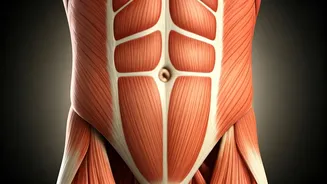Uric Acid Concerns
High uric acid levels are a significant health concern, often associated with conditions like gout, kidney stones, and an increased risk of heart disease.
The issue arises when the body either produces too much uric acid or struggles to eliminate it effectively. This buildup can lead to the formation of crystals in joints and other tissues, causing pain and inflammation. Early detection and management are key to preventing the progression of these conditions and maintaining overall health. A proactive approach, including lifestyle adjustments, is crucial to address this issue effectively and reduce potential health complications. Awareness of the risks and adopting preventive strategies can help people safeguard their well-being.
The 10-Minute Routine
Implementing a 10-minute exercise routine can be a convenient way to reduce uric acid levels. This exercise routine includes a combination of gentle stretching and light cardio. Activities like brisk walking, jogging, or cycling, done at a moderate intensity for this duration, can stimulate blood flow and support the body's natural processes. Another vital component is stretching, which enhances joint flexibility and facilitates better circulation. Including leg exercises aids in the mobility of the legs, and the increased activity can assist the body in eliminating uric acid more efficiently. This approach not only aids in lowering uric acid but also has broader advantages for overall health, such as improving cardiovascular function and promoting a healthier weight.
Walking's Impact
Walking, a readily accessible exercise, plays a crucial role in managing uric acid levels. Regular walking promotes blood circulation, aiding the kidneys in effectively eliminating uric acid from the body. This small, yet impactful, daily activity requires no special equipment or training, making it easily integrated into a daily routine. Studies suggest that even short walks can make a difference in your health. A regular walking routine can result in lower uric acid levels and provide additional advantages such as weight management, improved mood, and enhanced cardiovascular health. Adding walking to a daily routine can be a simple, yet powerful step towards a healthier lifestyle.
Benefits of Exercise
The 10-minute exercise plan offers several benefits beyond just reducing uric acid. Engaging in exercise boosts metabolism, which can help in weight management, a factor associated with uric acid levels. Regular physical activity supports cardiovascular health, reducing the risk of heart disease, a potential risk when uric acid is high. Additionally, exercise improves overall physical function, giving you more energy and improved quality of life. The mental health benefits of exercise, such as reduced stress and improved mood, also contribute to a holistic approach to well-being. Exercise supports both physical and mental aspects of health, making it an essential element for managing uric acid and promoting a healthy life.
Supporting Habits
Supplementing the 10-minute exercise routine with certain habits can enhance its effectiveness. A diet rich in foods low in purines (which convert into uric acid) and plenty of water is essential. Stay hydrated to support kidney function and efficient uric acid elimination. Limiting alcohol consumption, especially beer (which contains high purines), is also beneficial. Maintaining a healthy weight through a balanced diet and exercise can further contribute to lower uric acid levels. These habits work in conjunction with the exercise routine to provide a comprehensive approach to managing uric acid and promoting overall health. The synergy of these practices maximizes the impact of the exercise program.











